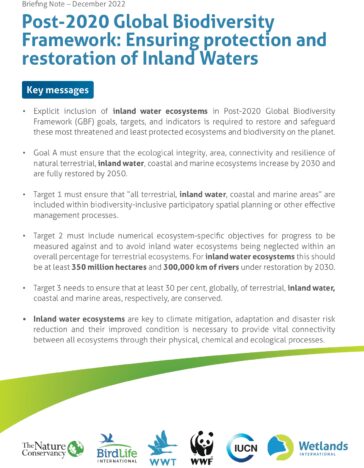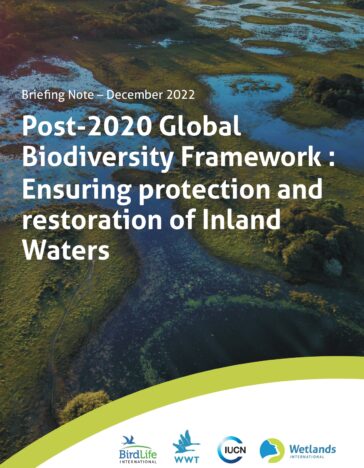
Post-2020 Global Biodiversity Framework: Ensuring protection and restoration of Inland Waters
-
Climate and disaster risks
Although now only accounting for around 6% of the Earth’s surface area, wetlands sustain a disproportionately high diversity of life, with approximately 40% of all known plant and animal species living or breeding in inland waters.
Adequate recognition of inland waters or wetlands in the text of the post-2020 Global Biodiversity Framework (GBF), especially in Targets 1, 2, and 3, is critical to addressing the risk that inland waters are neglected when it comes to implementation.
The use of the term inland waters in the CBD corresponds to the definition of wetlands in Article 1.1 of the Ramsar Convention: “areas of marsh, fen, peatland or water, whether natural or artificial, permanent or temporary, with water that is static or flowing, fresh, brackish or salt, including areas of marine water the depth of which at low tide does not exceed six metres.” Under both Conventions, the depth limit applies only to coastal areas. The terms wetlands and inland waters may therefore be used interchangeably. They include water bodies like rivers, lakes, ponds, marshes, swamps, peatlands, and other wetlands, including those located in coastal areas and adjacent to marine environments.
Inland water ecosystems are not only biodiversity hotspots. Wetlands are key to climate mitigation, adaptation, and disaster risk reduction and their improved condition is necessary to provide vital connectivity between all ecosystems through their physical, chemical, and ecological processes.
Contracting Parties to the Ramsar Convention on Wetlands recently adopted a resolution calling on Parties to the Convention on Biological Diversity (CBD) to: “enable the adequate recognition of wetlands in the goals, targets, and indicators of the post-2020 Global Biodiversity Framework.”
Wetlands International, IUCN, WWT, WWF, and Birdlife International have produced a briefing note on how the protection and restoration of inland waters should feature in the post-2020 GBF, including global wetland restoration targets of at least 300,000 km of rivers and 350 million hectares of inland water ecosystems by 2030.


